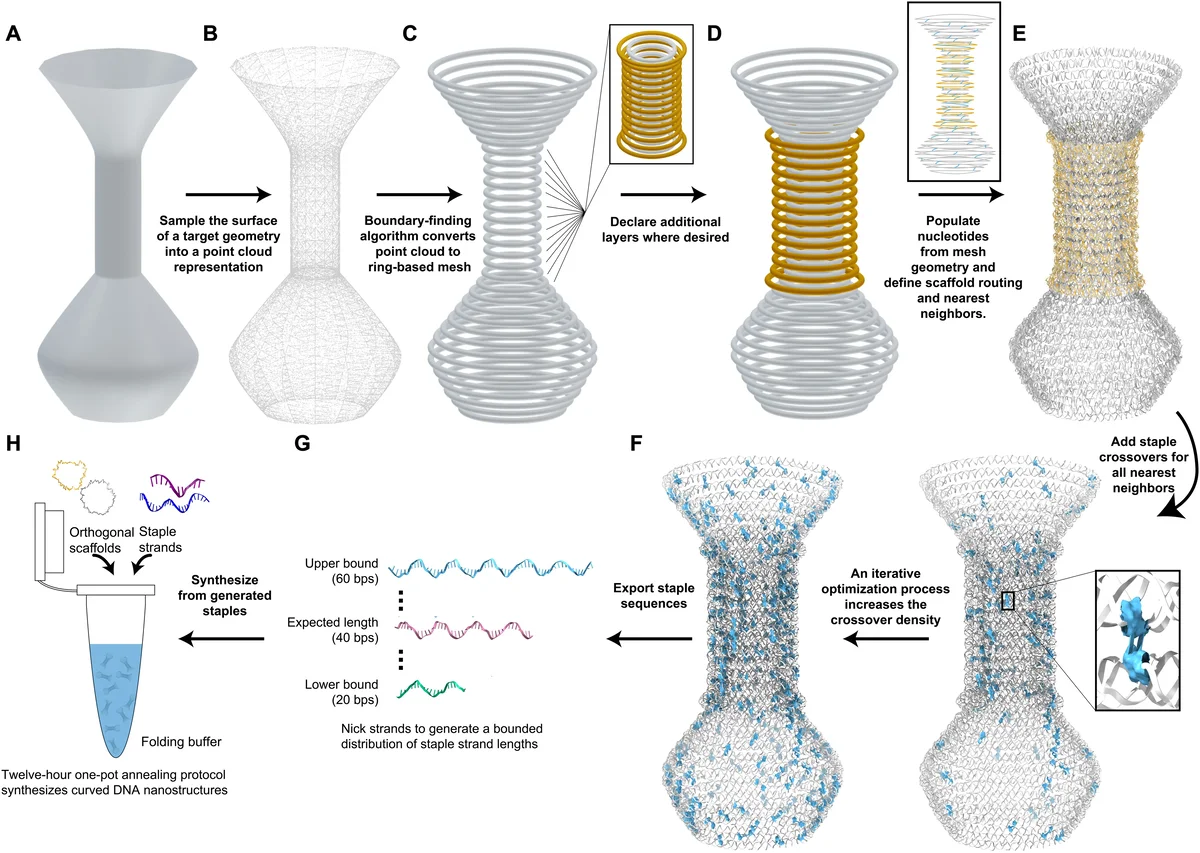Scientists from Duke University and Arizona State University have developed a computer program called DNAxiS that creates tiny three-dimensional vases and bowls from DNA molecules. These results demonstrate the potential of the new open source software to help create 3D structures much faster than experts have been able to do manually for years. The results of the study were published in the journal Science Advances.
It has been clarified that the enhancement allows to turn drawings or digital models into three-dimensional structures made up of thread-like DNA molecules, such as nanovases, bowls, hollow spheres, and other more complex shapes integrated together. Each object is not more than 0.0000051 cm in cross section. This means that about 50,000 similar shapes can fit on a pin head.
Researchers have previously managed to use DNA as a building material. The first 3D shapes were simple cubes, pyramids, and shapes with flat surfaces, such as soccer balls, that could be formed according to the block principle. However, there were problems with structures with curved lines, which are more common in nature. These were overcome with the help of DNAxiS, which automatically wraps the long double helix of DNA into loops and then superimposes them to form the outline of the object. The team decided to reinforce the structures with additional layers to make them stronger.
For example, in a mushroom-shaped model, the computer outputs a list of DNA strands that will be assembled in the desired configuration. Scientists load the synthesized base into a special chamber, and then the device, which heats and cools the mixture, creates the necessary nanostructures within 12 hours. In practice, this will help create small capsules or solar cells for drug delivery, molds for casting metal particles of a certain shape for medical imaging.













